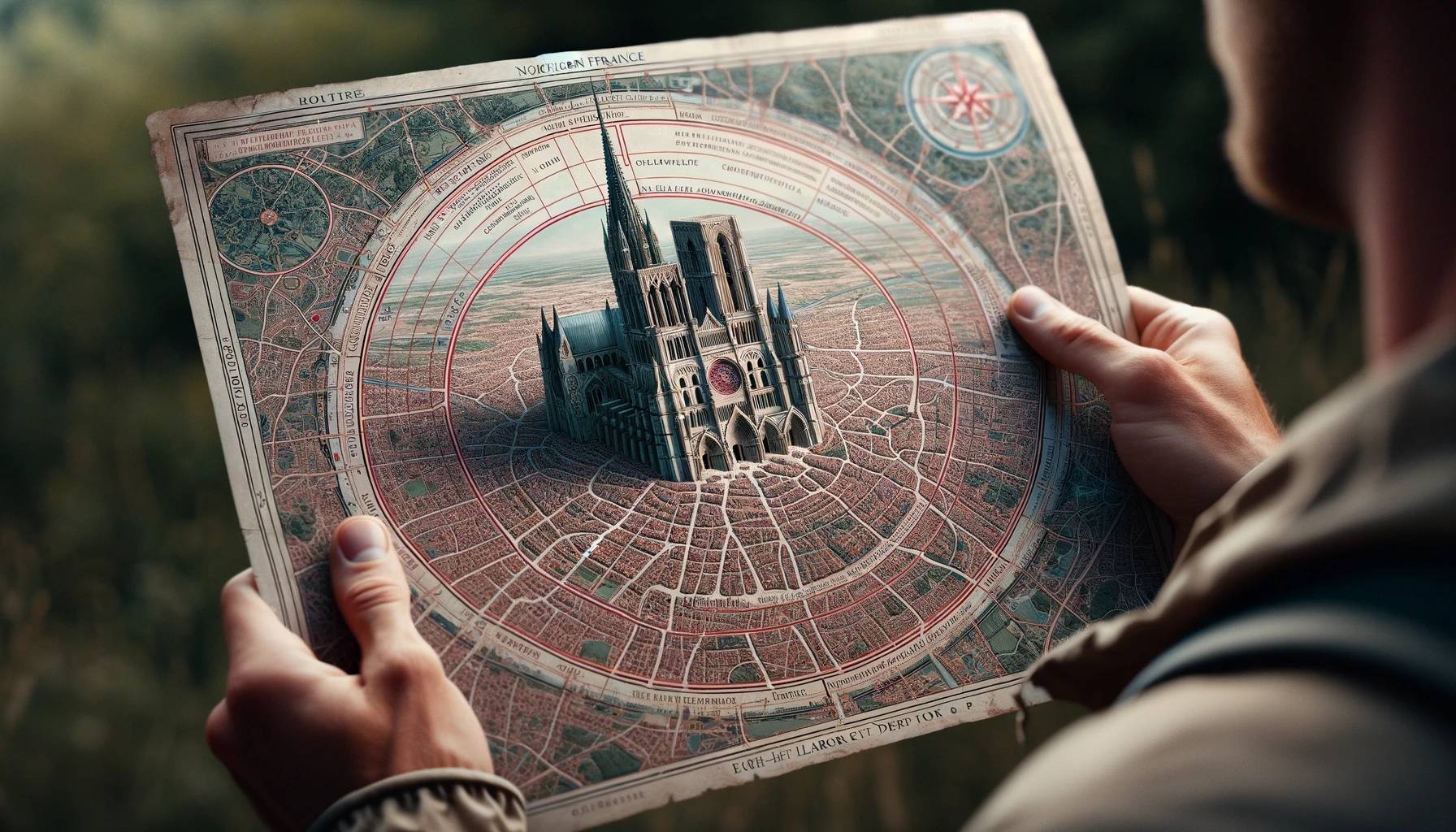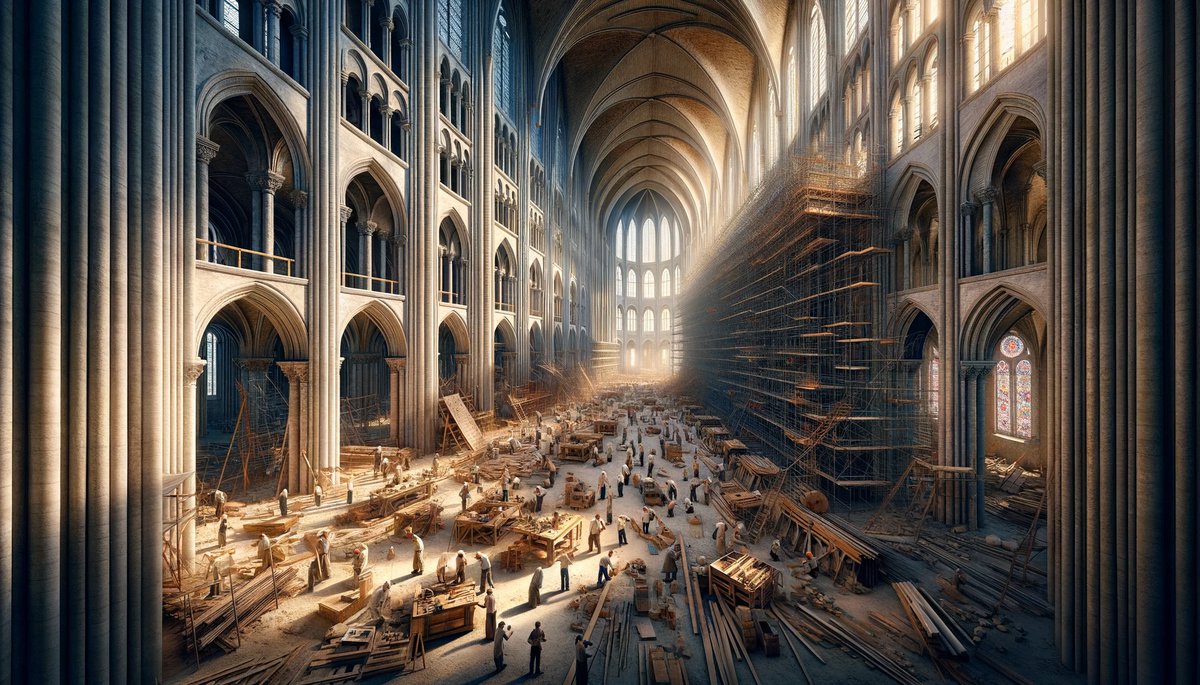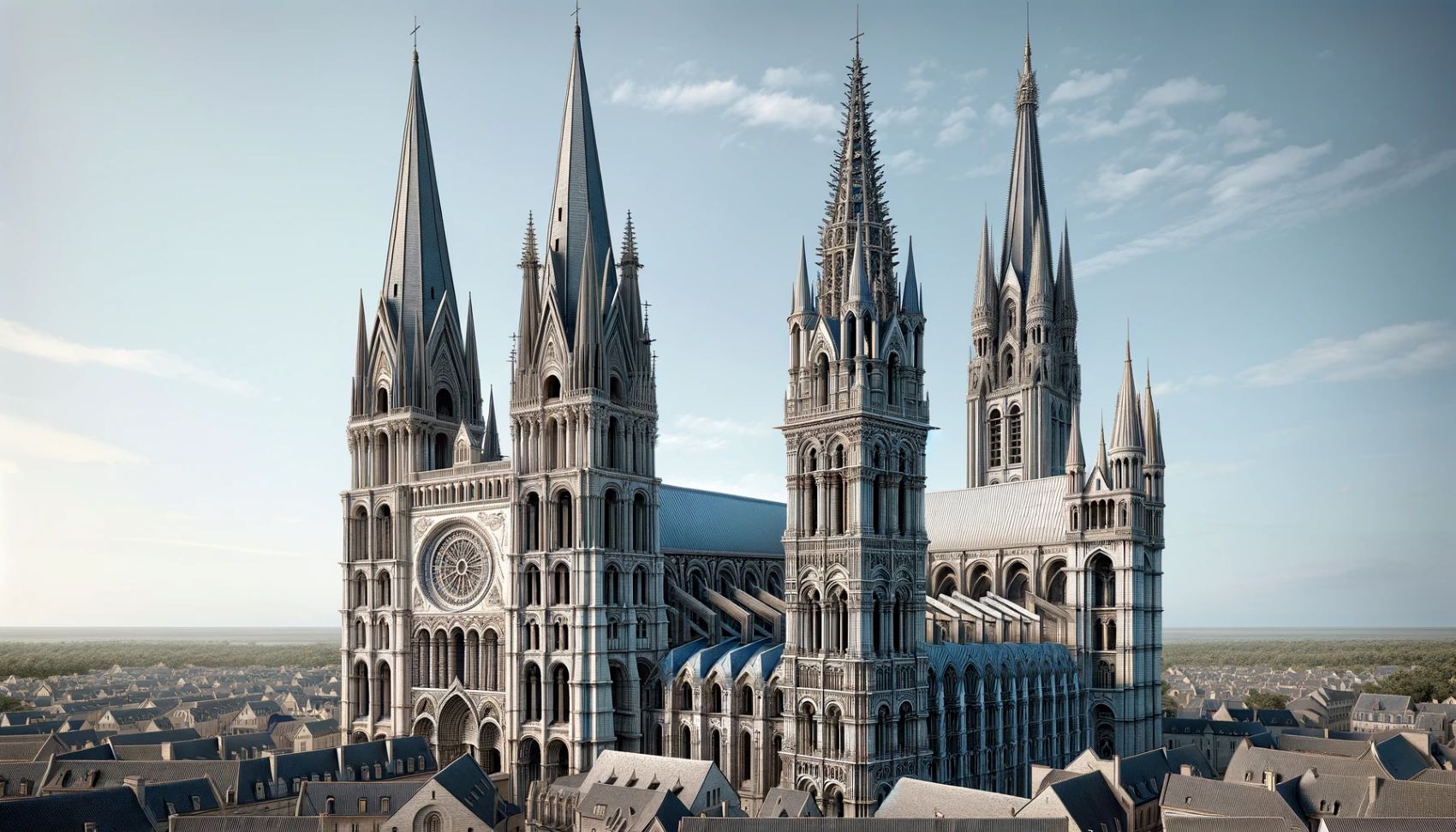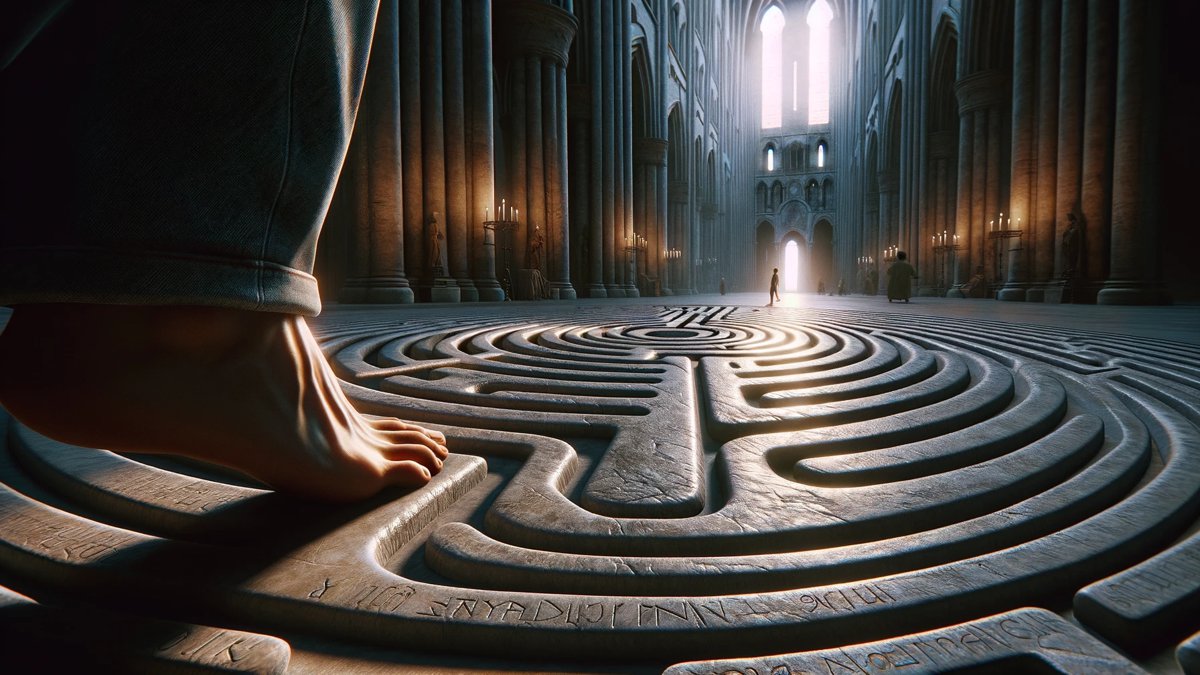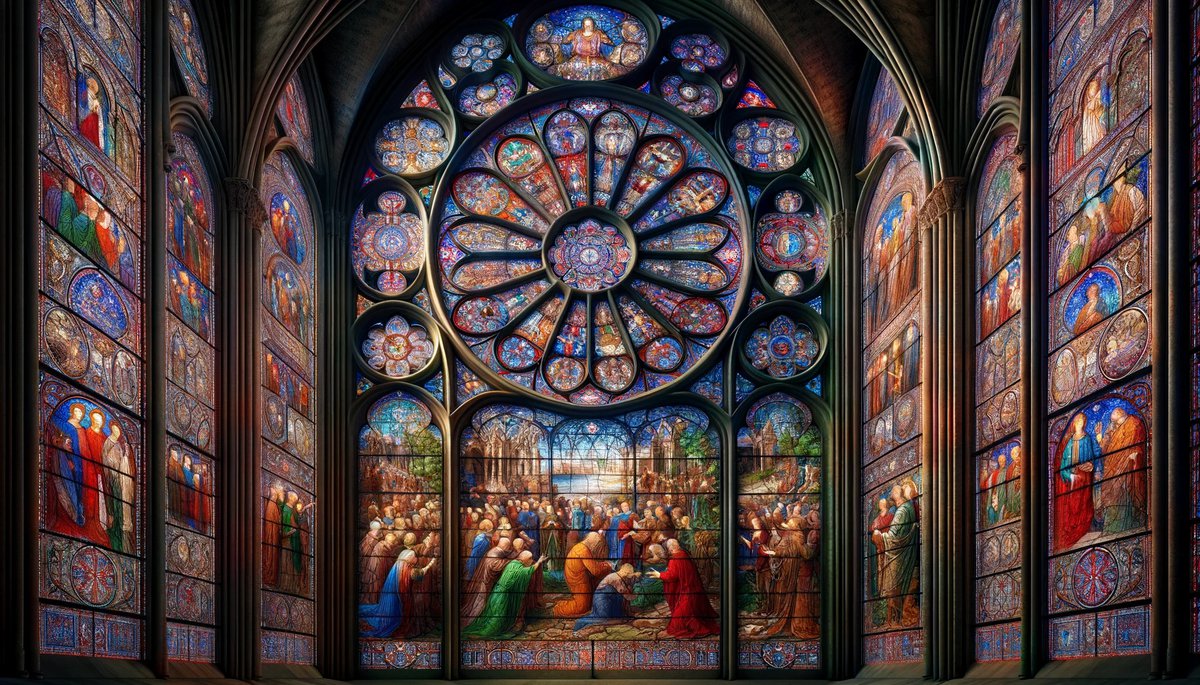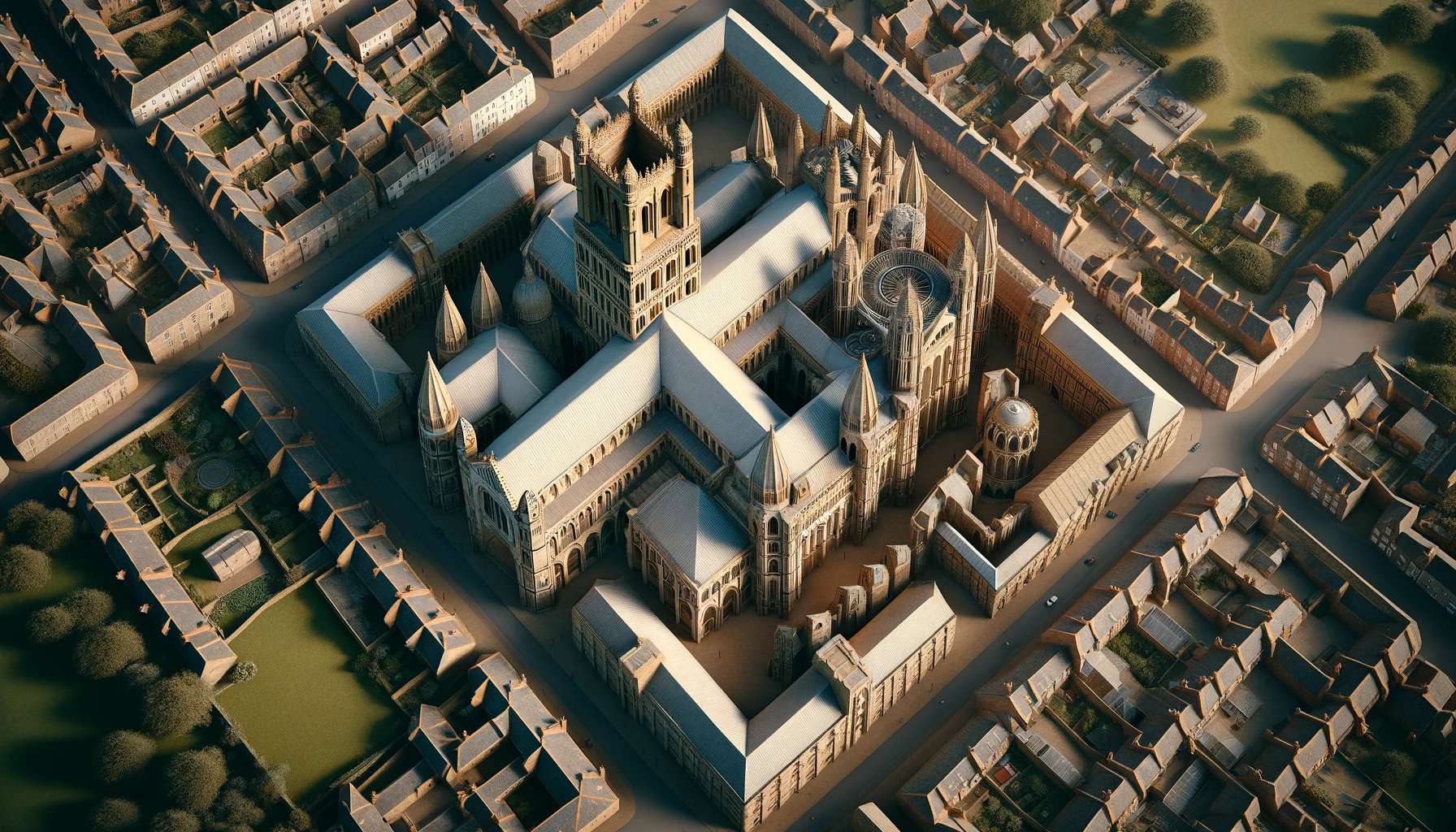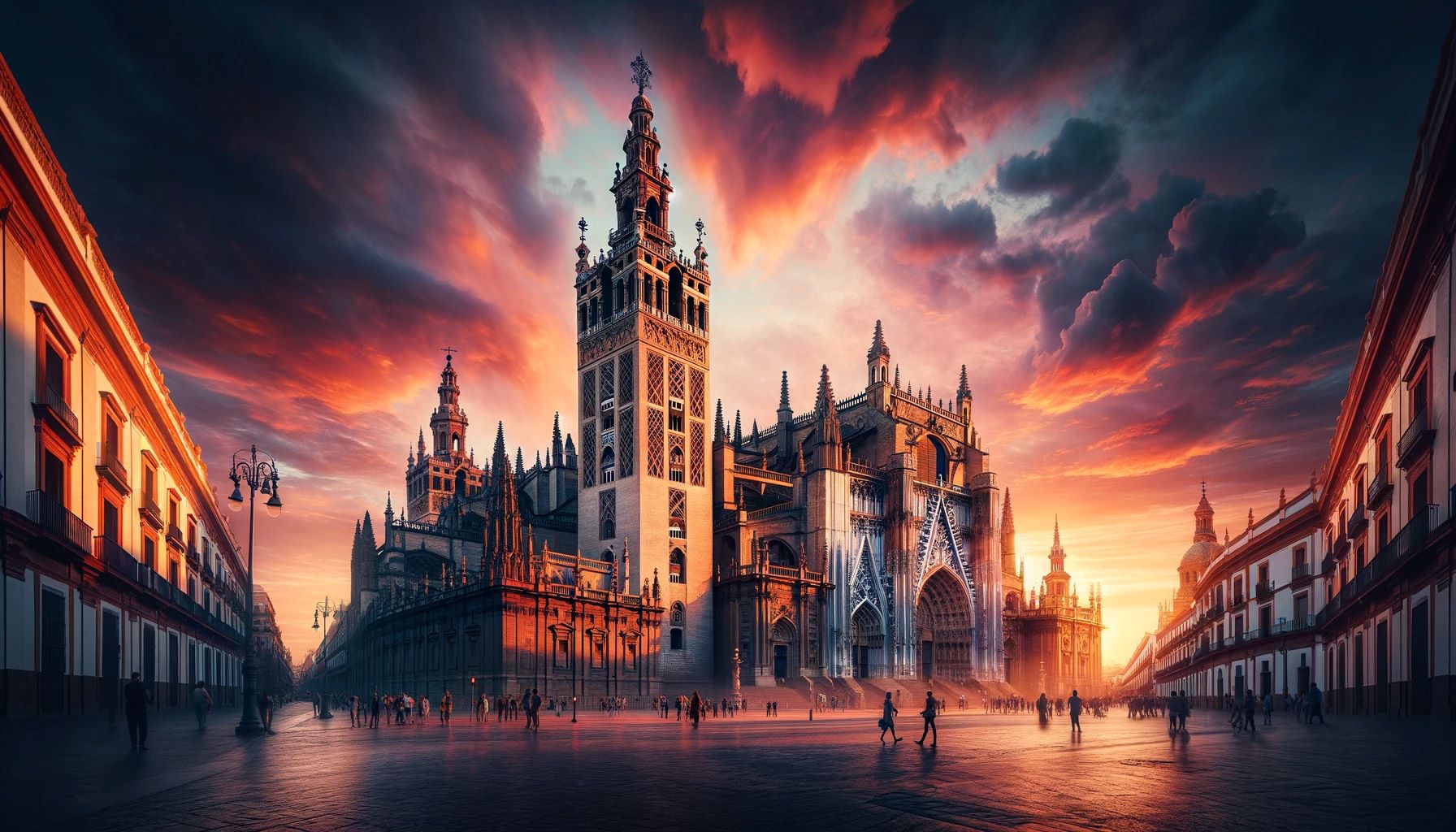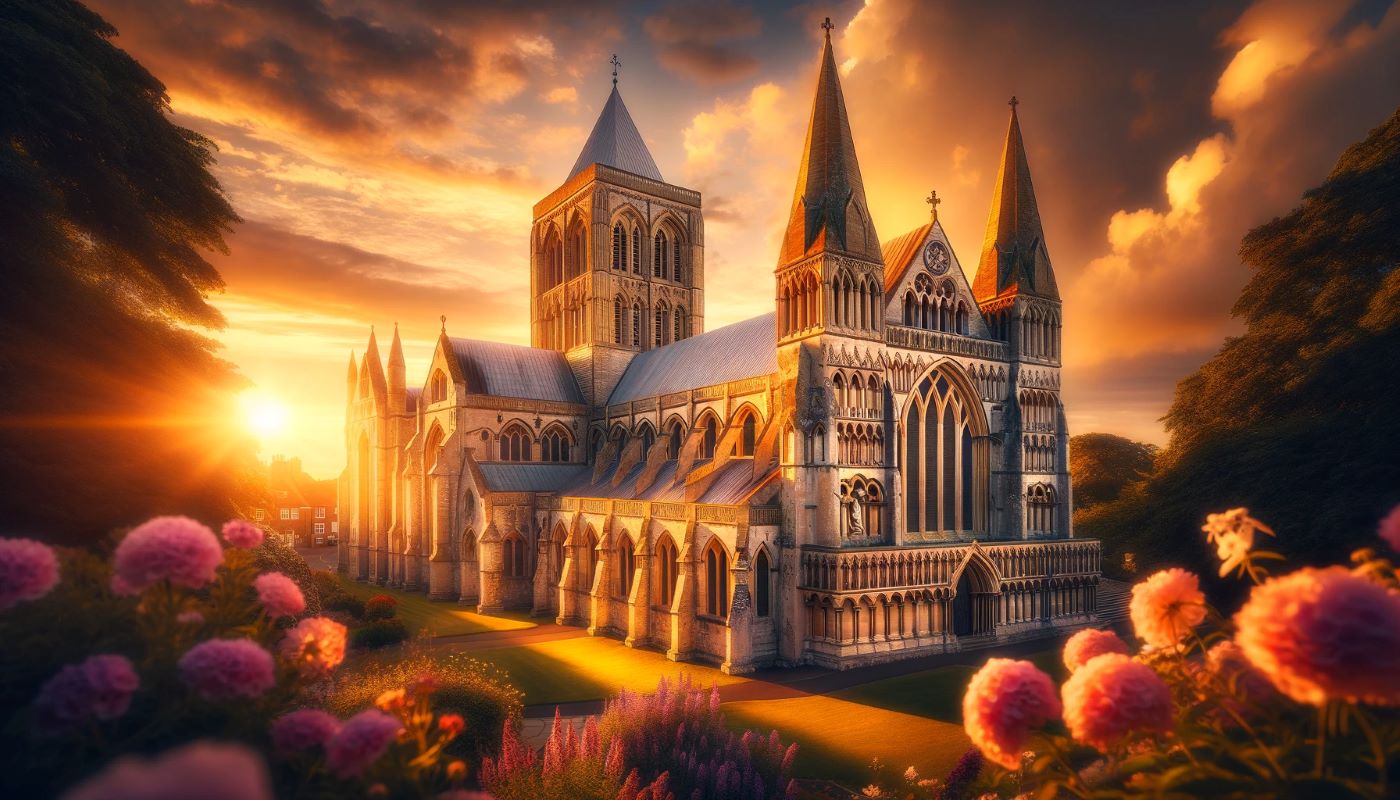Home>Arts and Culture>How Was The Chartres Cathedral Rose Window Created?


Arts and Culture
How Was The Chartres Cathedral Rose Window Created?
Published: February 15, 2024
Jason DeRose, Managing Editor at Christian.net, uses his expertise in religion and journalism to deepen understanding of faith's societal impacts. His editorial leadership, coupled with a strong academic background, enriches the platform’s diverse content, earning him recognition in both journalism and religious circles.
Discover the fascinating history and intricate craftsmanship behind the Chartres Cathedral Rose Window, a masterpiece of arts and culture. Explore the techniques and symbolism that went into creating this iconic architectural marvel.
(Many of the links in this article redirect to a specific reviewed product. Your purchase of these products through affiliate links helps to generate commission for Christian.net, at no extra cost. Learn more)
Table of Contents
Introduction
The Chartres Cathedral in France is renowned for its stunning architecture and intricate stained glass windows, with the Rose Window standing as a testament to the ingenuity and craftsmanship of medieval artisans. This masterpiece of Gothic artistry has captivated visitors for centuries, drawing them into a world of divine symbolism and breathtaking beauty.
The creation of the Chartres Cathedral Rose Window is a testament to the skill and dedication of the artisans who crafted it. This magnificent stained glass window, located on the west facade of the cathedral, is a true marvel of medieval engineering and artistic expression. Its radiant colors and intricate design have made it an enduring symbol of spiritual enlightenment and artistic achievement.
As we delve into the history and construction of this awe-inspiring masterpiece, we will uncover the secrets of its creation and explore the profound symbolism imbued within its intricate design. From the meticulous craftsmanship of the artisans to the enduring legacy of the window, the story of the Chartres Cathedral Rose Window is a testament to the enduring power of human creativity and spiritual devotion.
History of the Chartres Cathedral
The history of the Chartres Cathedral is a tapestry woven with threads of faith, resilience, and architectural brilliance. The site where the cathedral now stands has been a place of worship since ancient times, with the Romans building a temple to the Celtic goddess, Epona, on the same location. However, it was in the 12th century that the construction of the current cathedral began, following the destruction of the previous church in a fire.
The cathedral's construction was completed in an astonishingly short span of time, with the main body of the building being finished in just 26 years. This remarkable feat is a testament to the dedication and skill of the craftsmen and artisans who worked tirelessly to bring the vision of the cathedral to life.
The Chartres Cathedral holds a special place in the history of Gothic architecture, as it represents a shift towards a more unified and harmonious style. The cathedral's architecture reflects the transition from the earlier Romanesque style to the soaring heights and intricate details of the Gothic period. Its innovative use of flying buttresses, pointed arches, and expansive stained glass windows set a new standard for cathedral design and construction.
Throughout its history, the cathedral has weathered numerous challenges, including wars, revolutions, and natural disasters. Despite these trials, the Chartres Cathedral has stood as a symbol of resilience and spiritual devotion, drawing pilgrims and visitors from around the world to marvel at its beauty and significance.
Today, the Chartres Cathedral continues to inspire awe and reverence, serving as a living testament to the enduring legacy of medieval craftsmanship and the enduring power of faith. Its rich history and architectural significance make it a cherished UNESCO World Heritage site, ensuring that future generations will have the opportunity to experience its timeless grandeur.
Importance of the Rose Window
The Rose Window of the Chartres Cathedral holds profound significance, both architecturally and symbolically. As a masterpiece of medieval stained glass artistry, it serves as a focal point of spiritual contemplation and artistic inspiration. The window's importance transcends its aesthetic appeal, embodying a rich tapestry of religious symbolism and cultural heritage.
Architecturally, the Rose Window represents a triumph of engineering and artistic innovation. Its intricate tracery and radiant stained glass panels showcase the technical prowess of medieval craftsmen, who deftly combined geometry, color, and light to create a transcendent work of art. The window's placement on the west facade of the cathedral allows natural light to filter through its vibrant glass, casting a kaleidoscope of colors and patterns into the sacred space within.
Symbolically, the Rose Window serves as a visual representation of divine harmony and spiritual enlightenment. Its circular form, reminiscent of a mandala, evokes notions of unity and eternity, inviting contemplation of the divine order and the interconnectedness of all creation. The window's iconography, featuring intricate depictions of biblical narratives, saints, and celestial motifs, offers a visual narrative of faith and salvation, inviting worshippers and visitors to reflect on the mysteries of the Christian tradition.
Furthermore, the Rose Window's significance extends beyond its religious symbolism, encapsulating the cultural and historical heritage of the medieval era. As a testament to the artistic achievements of the period, the window stands as a timeless expression of human creativity and devotion, transcending temporal boundaries to inspire awe and wonder in contemporary audiences.
In essence, the Rose Window of the Chartres Cathedral is a testament to the enduring power of art and spirituality. Its architectural grandeur and symbolic depth continue to captivate and inspire, inviting visitors to gaze upon its radiant beauty and contemplate the timeless truths it embodies. As a cherished jewel of Gothic architecture, the Rose Window stands as a living testament to the ingenuity and spiritual aspirations of the medieval craftsmen who brought it into being.
Design and Layout of the Rose Window
The design and layout of the Rose Window at the Chartres Cathedral exemplify the pinnacle of medieval stained glass artistry and architectural ingenuity. This magnificent circular window, measuring over 12 meters in diameter, is a symphony of vibrant colors, intricate tracery, and symbolic imagery, meticulously crafted to inspire awe and contemplation.
The Rose Window is composed of a series of concentric circles, each adorned with delicate tracery that forms a mesmerizing pattern of interlacing stone and glass. At its center, a radiant depiction of Christ, surrounded by the celestial choir of angels, serves as the focal point of the window, drawing the eye towards its transcendent beauty. The surrounding panels feature a rich tapestry of biblical narratives, saints, and symbolic motifs, intricately rendered in a kaleidoscope of hues that dance with the changing light.
The window's design reflects a profound understanding of geometry and symbolism, with the circular form representing the divine perfection and eternity, while the intricate tracery evokes the interconnectedness of creation. The carefully selected colors, ranging from deep blues to vibrant reds and radiant golds, create a visual symphony that enlivens the sacred space within the cathedral, casting a mesmerizing glow that shifts with the passage of the sun.
The layout of the Rose Window is a testament to the skill and artistry of the medieval craftsmen who meticulously designed and executed its creation. The intricate tracery, composed of slender stone mullions and delicate glass panels, required a meticulous understanding of structural engineering and artistic composition. Each element of the window, from the smallest piece of glass to the elaborate tracery patterns, was carefully crafted to harmonize with the overall design, creating a unified and transcendent work of art.
In essence, the design and layout of the Rose Window at the Chartres Cathedral stand as a testament to the enduring legacy of medieval craftsmanship and artistic vision. Its intricate beauty and profound symbolism continue to captivate and inspire, inviting visitors to gaze upon its radiant splendor and contemplate the timeless truths it embodies. As a masterpiece of Gothic artistry, the Rose Window serves as a luminous beacon of human creativity and spiritual devotion, transcending the boundaries of time to inspire wonder and reverence in all who behold it.
Construction Process
The construction of the Chartres Cathedral Rose Window was a monumental undertaking that required a harmonious blend of artistic vision, technical expertise, and unwavering dedication. The process of creating this awe-inspiring masterpiece unfolded over several years, with skilled artisans and craftsmen laboring tirelessly to bring the vision of the window to life.
The construction of the Rose Window began with the meticulous design and planning phase, where master craftsmen and architects collaborated to conceive the intricate layout and iconography of the window. Every aspect of the design, from the delicate tracery patterns to the selection of vibrant glass hues, was carefully considered to evoke a sense of divine splendor and spiritual enlightenment.
Once the design was finalized, the artisans embarked on the painstaking task of crafting the individual components of the window. Skilled glassmakers meticulously shaped and colored the glass panels, infusing them with a radiant luminosity that would captivate the eye when illuminated by sunlight. Meanwhile, stone masons and sculptors meticulously carved the intricate tracery patterns from durable limestone, ensuring that the window's structural elements would withstand the test of time.
As the individual components of the Rose Window took shape, the craftsmen worked in concert to assemble them into a cohesive and harmonious whole. The delicate process of fitting the glass panels into the stone tracery required precision and finesse, as each piece had to seamlessly integrate with its neighbors to create a seamless tapestry of color and light.
The final stage of the construction process involved the installation of the Rose Window within the cathedral's west facade. This monumental task required the coordination of skilled craftsmen and engineers, who carefully hoisted the massive window into place, securing it within the architectural framework of the cathedral.
The culmination of these efforts resulted in the creation of a transcendent work of art that continues to inspire awe and reverence to this day. The construction process of the Chartres Cathedral Rose Window stands as a testament to the enduring legacy of medieval craftsmanship and the timeless power of human creativity, inviting visitors to marvel at its radiant beauty and contemplate the profound spiritual truths it embodies.
Read more: How Was Chartres Cathedral Built
Symbolism and Meaning of the Rose Window
The symbolism and meaning of the Rose Window at the Chartres Cathedral transcend mere aesthetic beauty, encompassing a rich tapestry of religious allegory and spiritual significance. As a radiant jewel adorning the cathedral's west facade, the Rose Window serves as a visual symphony of divine truths and celestial mysteries, inviting contemplation and reverence from all who behold its transcendent splendor.
At the heart of the Rose Window lies a profound symbolism that resonates with the core tenets of Christian faith. The circular form of the window, reminiscent of a mandala, represents the eternal and unchanging nature of God, evoking a sense of divine perfection and unity. This symbolism is further accentuated by the intricate tracery patterns that radiate outward from the center, symbolizing the interconnectedness of all creation and the divine order that governs the universe.
The iconography depicted within the Rose Window offers a visual narrative of biblical narratives, saints, and celestial motifs, each imbued with layers of symbolic meaning. The central depiction of Christ, surrounded by a celestial choir of angels, serves as a focal point of spiritual contemplation, inviting worshippers to reflect on the divine presence and the promise of salvation. The surrounding panels feature intricate scenes from the Old and New Testaments, portraying the unfolding drama of creation, redemption, and the triumph of faith over adversity.
The vibrant colors that adorn the stained glass panels of the Rose Window also carry profound symbolic significance. The deep blues symbolize the heavenly realm and the boundless expanse of divine love, while the radiant reds evoke the sacrifice and redemption offered through the blood of Christ. The golden hues that infuse the window with a luminous glow symbolize the eternal light of God's presence, illuminating the sacred space within the cathedral with a transcendent radiance.
In essence, the symbolism and meaning of the Rose Window at the Chartres Cathedral serve as a testament to the enduring power of religious symbolism and artistic expression. Its intricate iconography and vibrant colors weave a visual tapestry of faith and devotion, inviting visitors to contemplate the timeless truths it embodies. As a radiant beacon of spiritual enlightenment, the Rose Window stands as a testament to the enduring legacy of Christian artistry and the enduring power of divine symbolism.
Restoration and Preservation Efforts
The Chartres Cathedral Rose Window has endured the passage of centuries, standing as a testament to the enduring legacy of medieval craftsmanship and spiritual devotion. However, the ravages of time and the elements have taken their toll on this magnificent work of art, necessitating ongoing restoration and preservation efforts to ensure its continued splendor for future generations.
The restoration and preservation of the Rose Window is a delicate and meticulous process that requires the expertise of skilled conservators and artisans. Over the years, the stained glass panels have suffered from the effects of weathering, pollution, and structural strain, leading to cracks, discoloration, and loss of structural integrity. To address these challenges, conservation teams have undertaken comprehensive efforts to assess, repair, and protect the window from further deterioration.
One of the primary objectives of the restoration efforts is to stabilize the structural elements of the window, ensuring that the delicate tracery and glass panels remain secure and intact. This involves carefully examining the stone mullions and lead cames that hold the glass in place, repairing any damage and reinforcing the structural integrity of the window. Additionally, measures are taken to mitigate the impact of environmental factors, such as temperature fluctuations and moisture, which can accelerate the deterioration of the glass and stone components.
The conservation teams also employ advanced techniques to clean and repair the stained glass panels, aiming to restore their original brilliance and vibrancy. This meticulous process involves removing accumulated dirt, grime, and pollutants from the surface of the glass, revealing the radiant colors and intricate details hidden beneath. Any damaged or deteriorated glass pieces are painstakingly repaired or replaced, ensuring that the window retains its luminous beauty and historical authenticity.
Furthermore, efforts are made to document and archive the restoration process, preserving valuable insights into the craftsmanship and artistry of the medieval period. Through detailed documentation and analysis, conservators gain a deeper understanding of the materials and techniques used in the creation of the Rose Window, informing future conservation efforts and scholarly research.
In essence, the restoration and preservation efforts surrounding the Chartres Cathedral Rose Window are a testament to the enduring commitment to safeguarding this priceless work of art. By employing a harmonious blend of traditional craftsmanship and modern conservation practices, the custodians of the cathedral ensure that the Rose Window continues to inspire awe and reverence for generations to come.
Conclusion
The Chartres Cathedral Rose Window stands as a timeless testament to the enduring power of human creativity, spiritual devotion, and artistic ingenuity. From its humble beginnings as a vision in the minds of medieval craftsmen to its enduring legacy as a cherished jewel of Gothic artistry, the Rose Window continues to captivate and inspire visitors from around the world. Its radiant beauty, profound symbolism, and architectural grandeur serve as a luminous beacon of faith and artistic expression, inviting contemplation and reverence in equal measure.
As we reflect on the history, design, and significance of the Rose Window, we are reminded of the enduring legacy of the medieval craftsmen who brought this masterpiece into being. Their unwavering dedication, technical expertise, and artistic vision culminated in the creation of a transcendent work of art that continues to inspire awe and wonder to this day. The Rose Window's intricate tracery, vibrant stained glass panels, and profound iconography weave a visual tapestry of faith and devotion, inviting visitors to contemplate the timeless truths it embodies.
Furthermore, the Rose Window serves as a testament to the enduring power of religious symbolism and artistic expression. Its intricate iconography and vibrant colors weave a visual tapestry of faith and devotion, inviting visitors to contemplate the timeless truths it embodies. As a radiant beacon of spiritual enlightenment, the Rose Window stands as a testament to the enduring legacy of Christian artistry and the enduring power of divine symbolism.
In conclusion, the Chartres Cathedral Rose Window stands as a living testament to the enduring legacy of medieval craftsmanship and the timeless power of human creativity. Its radiant beauty and profound symbolism continue to captivate and inspire, inviting visitors to gaze upon its transcendent splendor and contemplate the profound spiritual truths it embodies. As a cherished jewel of Gothic architecture, the Rose Window serves as a luminous beacon of human creativity and spiritual devotion, transcending the boundaries of time to inspire wonder and reverence in all who behold it.
